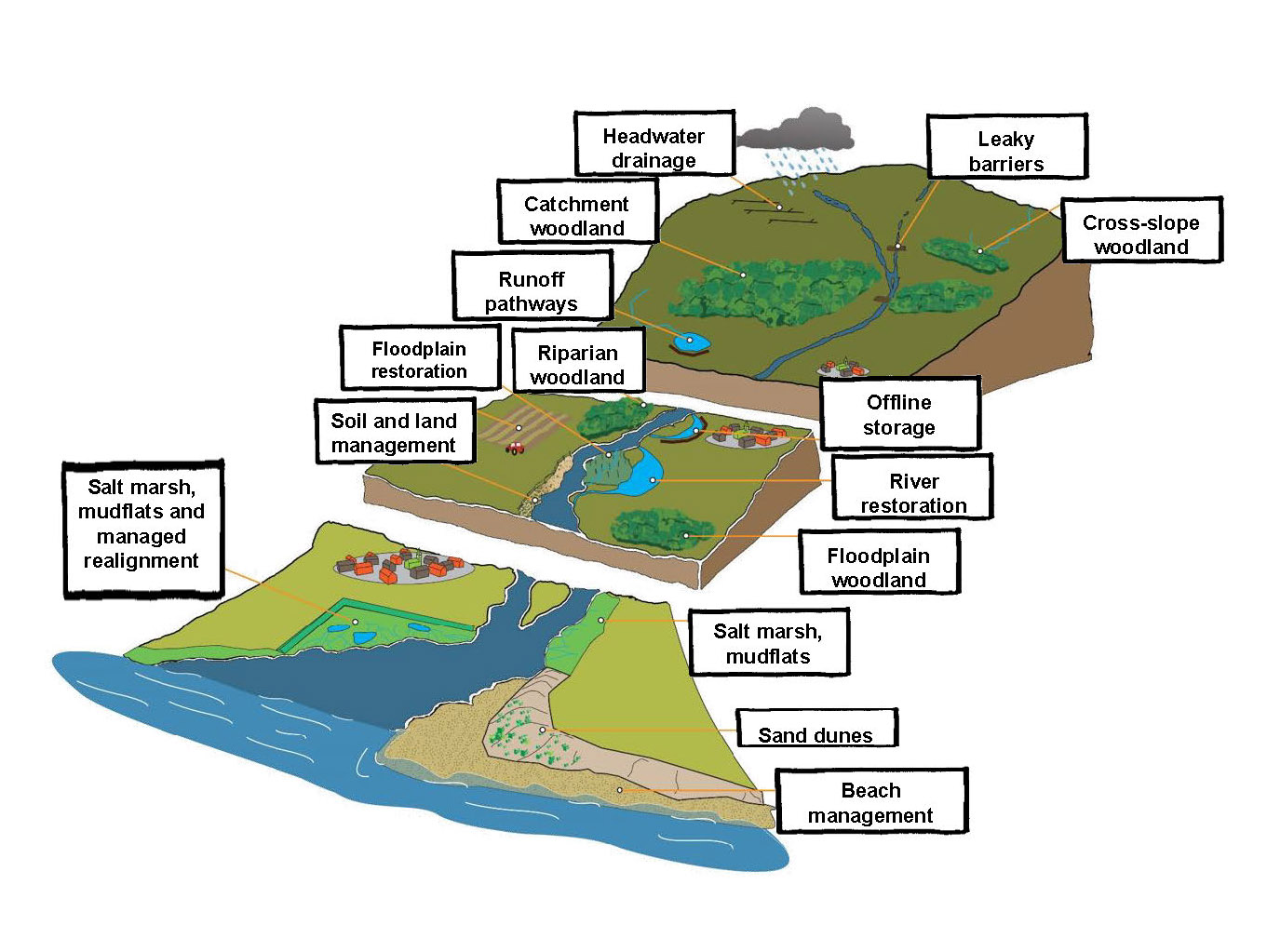What is Natural Flood Management?
Natural Flood Management aims to mimic natural river processes by using less traditional approaches to slowing down and storing water, such as reconnecting rivers with their floodplain and planting riparian woodland. This helps to reduce the risk of flooding downstream.
Such measures are usually less intrusive in the environment than more engineered solutions. They can bring added benefits such as enhanced biodiversity, increased carbon capture and improved water quality.
These measures are much cheaper to implement and are normally used higher up in the river catchment to tackle flooding nearer to the source. They are intended to be used in addition to the more engineered solutions downstream, rather than to replace them, to further reduce flood risk.

This diagram shows the various techniques that can be used within a river catchment to slow the flow of a river, aid water infiltration and storage and enhance wetland habitats, from its upland beginnings to the sea.
In the uplands:
- blocking headwater drainage channels
- leaky barriers
- cross-slope woodland
- catchment woodland
- slowing runoff pathways
Further down:
- riparian woodland
- offline storage
- floodplain restoration
- river restoration
- soil and land management
- floodplain woodland
At the river mouth:
- salt marsh
- mudflats
- managed realignment
- sand dunes
- beach management
Find out more about the Dartmoor Headwaters Natural Flood Management Project.
